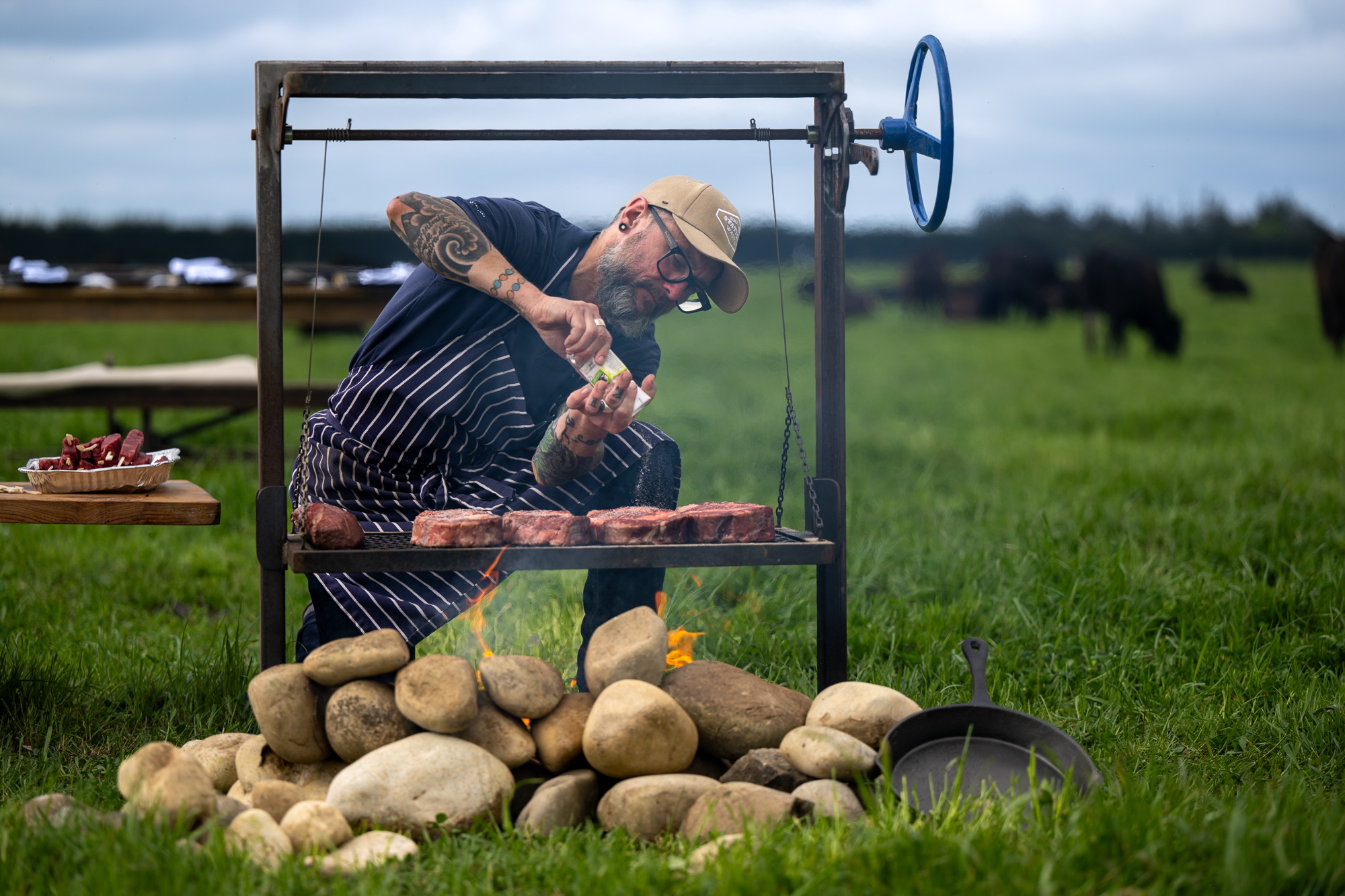
Building your customers’ confidence in selecting and cooking meat
Customers walking into a butcher shop often have a dish in mind, but not always the knowledge to choose the best cut for it. With the rise of cooking shows, social media and online food culture, today’s consumers are more informed than ever, but that doesn’t mean they always get it right. The challenge for you, their butcher, is to guide them toward the right choices. This ensures they get the most out of their meat purchases while fostering trust and building repeat business.
Darren O’Rourke knows this challenge well. A chef by trade, Darren has spent 25 years working in kitchens and butcheries, including a decade at The Bathers’ Pavilion under Serge Dansereau. He moved to Victor Churchill when it opened its doors in 2009, ultimately rising to the role of Head Butcher. He now applies his expertise as Brand Ambassador at Endeavour Meats. Darren believes that butchers who are naturally curious and expand their knowledge of cooking will always have an edge.
The value of curiosity
According to Darren, a butcher’s role goes far beyond cutting and selling meat; it’s about understanding what customers are trying to cook and guiding them toward the right options.
“If a customer says they want to cook a certain dish, a butcher should always be honest. Do you know the dish or not? If not, ask the customer about the recipe. What cut does it call for? Then talk them through the method,” Darren says.
The ability to have this conversation is the key. Customers trust butchers to know their products inside and out, so a poor recommendation can easily lead to a disappointing meal.
“There was a time when butchers could get away with not knowing. If a dish didn’t turn out right, customers would assume it was them that made the mistake, not the butcher. But that doesn’t work anymore,” he says.
Go beyond the popular cuts
For many butchers, premium loin cuts – sirloin, scotch fillet, tenderloin – sell themselves. They are familiar and easy to prepare, so customers often gravitate toward them. But Darren sees this as a missed opportunity.
“I’ll never recommend sirloin or scotch. Instead I go for flank, hanger, inside skirt, outside skirt or even some of the weirder ones like a velvet steak or Denver steak,” he says.
These cuts, often overlooked, offer great flavour and value. But to sell them effectively, butchers need to know how to cook them and how to educate customers on preparation techniques.
“With hanger steak, for example, you have to cook it to medium rare, medium at most. Otherwise, it turns to rubber,” Darren says. “But when it’s done right, it’s as tender as a scotch fillet, or even a tenderloin.”
Encouraging customers to explore different cuts benefits both the consumer and the butcher. It helps with carcase balance – ensuring the whole animal is used – and can make high-quality meat more affordable.
Educating customers at the counter
For butchers looking to improve their customer interactions, Darren’s advice is simple: be open, ask questions and be willing to learn.
“The best conversations happen when a customer walks in and says, ‘I want to cook beef tonight. Talk to me.’ That’s when you can guide them toward something unexpected.”
This approach not only helps customers discover new options but also reinforces the butcher’s role as a specialist.
“It’s about giving customers what they deserve, not just selling them something to get them out the door,” Darren says.
Rethinking ‘secondary cuts’
One of Darren’s biggest frustrations is the industry’s habit of labelling certain cuts as ‘secondary.’
“When you look at a live animal, every muscle, artery and organ is there for a reason. When that animal was alive, not one part of it was secondary to its life. So who are we to define it as secondary when it becomes a carcase?” he says.
Understanding how a muscle works helps determine the best way to cook it. For example, beef cheek is rich in collagen from the animal’s constant chewing, making it ideal for slow braising. Similarly, hanger steak has an intense flavour that benefits from quick, high-heat cooking.
“If you do the right thing to the cheek and the right thing to the tenderloin – letting them be at their best based on what they did as a muscle – then neither is secondary. They’re both as good as each other,” Darren says.
The butcher’s evolving role
With consumers becoming more knowledgeable and curious about meat, butchers have an opportunity to redefine their role. Darren encourages butchers to embrace the chef’s mindset: questioning, experimenting and constantly learning.
For Darren, it all comes back to that idea of curiosity.
“You can be the best butcher in the world, but if you can’t cook, you won’t be as good as you could be,” he says.
By guiding customers toward the right cuts, helping them cook them properly and sharing their expertise, butchers can strengthen relationships, build trust and ensure their customers keep coming back for both the meat and the knowledge that goes along with it.

